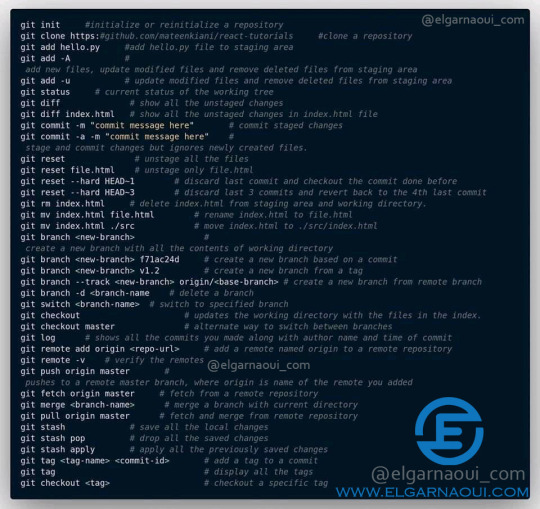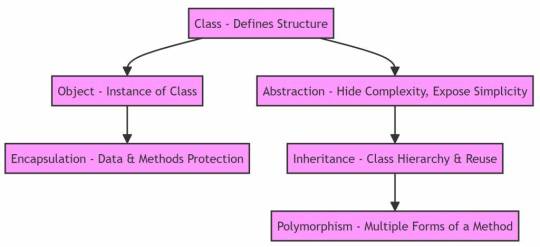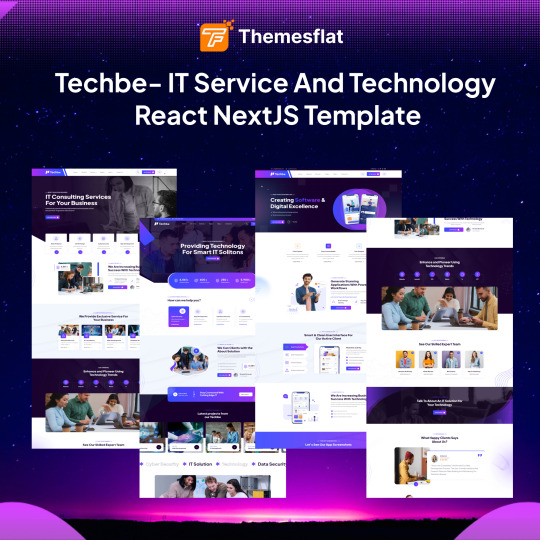#codequs
Explore tagged Tumblr posts
Photo

JavaScript 2018: Modern Approach ☞ http://learnstartup.net/p/Sy8mTR-9f #developer #coder #programmer ryRzy_ALIa4
3 notes
·
View notes
Text

Git commands
#programming#git#gitlab#gitcommands#javaprogramming#java 21#javascript#web development#coding#codequality#software engineering#python#language#machine learning#artificial intelligence
4 notes
·
View notes
Text
Managing Technical Debt in Software Development: Best Practices and Insights
Discover actionable strategies for identifying, managing, and reducing technical debt in software development, and how to prevent it from slowing down your team's progress.
0 notes
Text
Top Backend Development Services: Build Secure & High-Performance Applications

A website’s success starts behind the scenes. Our backend development services ensure speed, security, and scalability. Whether it's database management, API integration, or performance optimization, we've got you covered!
💻 Build a powerful digital foundation today.
#BackendDevelopment#WebPerformance#WebsiteOptimization#DatabaseManagement#ServerManagement#FullStackDevelopment#APIDevelopment#TechSolutions#SoftwareEngineering#WebSecurity#CyberSecurity#CloudComputing#CodeQuality#Scalability#PerformanceOptimization#BusinessTech#ITConsulting#DataSecurity#TechInnovation#DevOps#ClickDesignSolutions
0 notes
Text
AI is rewriting the rules of software development, but here’s the twist: debugging AI-generated code is becoming a growing challenge for developers. Let’s dive into how AI is reshaping the development landscape and what it means for the future of coding.
0 notes
Text

#DefectTracking#BugTracking#SoftwareTesting#QualityAssurance#QA#SoftwareDevelopment#BugFixes#TestingTools#AgileTesting#TestAutomation#Debugging#CodeQuality#DevOps
0 notes
Text
How Wasps Enhances Software Development Efficiency for Teams

In a fast-paced tech environment, optimizing the software development process is crucial for success. Wasps offers advanced solutions that empower development teams to work more efficiently and collaboratively.
Problem Statement:
Many development teams face challenges in managing complex projects, leading to miscommunication, delays, and reduced code quality.
Application:
By implementing Wasps, teams can automate their code review processes and streamline communication. For instance, a software development firm can use Wasps to automatically review code submissions for bugs and inconsistencies, providing immediate feedback to developers and preventing issues from accumulating.
Outcome:
Users experience significant improvements in code quality, faster turnaround times, and enhanced team collaboration. The platform's insights into performance metrics allow teams to identify bottlenecks and optimize their workflows.
Industry Examples:
Tech Startups: Utilizing Wasps for rapid development and deployment of new features.
Enterprise Software: Large organizations leverage Wasps to maintain high standards of code quality across multiple teams.
Freelance Developers: Independent developers use Wasps to manage projects efficiently and deliver quality work to clients.
Enhance your software development processes with Wasps’ intelligent tools. Visit aiwikiweb.com/product/wasps
0 notes
Text
From Blueprints to Models: Using OOP in AI Workflows

Object-Oriented Programming (OOP) is a widely used programming paradigm that focuses on organizing code into reusable objects. By encapsulating data and behavior within objects, OOP promotes modularity, reusability, and maintainability in software development. OOPs properties — Encapsulation, inheritance, polymorphism, abstraction, association, composition, and dependency injection provide the foundation for designing modular, reusable, and maintainable code.
Class: A recipe or blueprint.
Object: The actual item made from the blueprint.
Encapsulation: Keeping details safe and only exposing what’s necessary.
Inheritance: Passing down traits from parent to child.
Polymorphism: The same action behaving differently in different situations.
Abstraction: Hiding the complexity and showing only what’s needed.

Why OOP Matters for AI: The Need for Structured Code
Artificial Intelligence (AI) projects often involve complex algorithms, data structures, and workflows, making it essential to maintain a well-organized codebase. As these projects grow in size and sophistication, having structured, modular code becomes crucial for efficient development, collaboration, and maintenance. Here’s how Object-Oriented Programming (OOP) addresses these needs:
You can create separate classes for handling datasets, defining models, and running evaluation metrics. This structure makes it easier to understand the project as a whole and to modify individual components without affecting the rest of the system.
In AI development, common tasks such as data loading, feature engineering, and model training are often repeated across projects. OOP enables code reuse through inheritance, meaning that you can create base classes with shared functionality and extend them for specific use cases.
OOP’s encapsulation principle ensures that the internal state of an object is protected and only accessible through specific methods. In AI, this is particularly useful for maintaining data integrity.
In OOP, related functionality is bundled within classes, making it easier to isolate and fix bugs. For example, if there’s a problem with data preprocessing, you know to look within the “DataPreprocessor” class.
OOP provides a standardized way of organizing code, which is especially helpful in large AI teams.
Future Trends: OOP and AI Development
As the fields of Object-Oriented Programming (OOP) and Artificial Intelligence (AI) continue to evolve, we are likely to see significant developments that shape the way these two disciplines intersect. The future of OOP in AI development looks promising, with a strong focus on modularity, efficiency, and user-friendly abstractions. As AI continues to grow in complexity and impact, OOP principles will remain essential for building scalable, maintainable, and ethical AI systems. Developers can look forward to a new era of AI-driven tools and frameworks that make the most of OOP, enabling the creation of more sophisticated and efficient AI solutions.
#ai#oops ai#oops4pillars#objectorientedprogramming#ArtificialIntelligence#OOP#ObjectOrientedProgramming#MachineLearning#Programming#TechTrends#SoftwareEngineering#CodeQuality#DataScience#Python#Coding#SoftwareDevelopment#Innovation#Tech
0 notes
Text
Deep Flow Code Review: Is It Worth It? Discovering Your Path to Abundance

In the fast-moving world of software development, where innovation and collaboration are key, Deep Flow Code Reviews are much more than a routine check. They present an opportunity to enhance your team’s collective intelligence and craftsmanship. Picture unlocking hidden potential within your codebase while fostering a culture of continuous improvement.
Welcome to “Deep Flow Code Review: Best Practices for Developers and Teams,” where we dive into the art and science of effective code assessments that not only improve code quality but also strengthen team dynamics. Whether you’re a veteran developer or part of an agile team striving to refine your process, this guide is full of actionable insights to transform how you approach code reviews. Join us as we explore strategies that turn critical feedback into constructive conversations, paving the way for cleaner, more efficient code—and happier developers!
#DeepFlowCodeReview#CodeQuality#SoftwareDevelopment#TeamCollaboration#ContinuousImprovement#CodeReviewBestPractices#DeveloperGuide#AgileTeams#CleanCode#EfficientCoding#TechInnovation#CodeCraftsmanship#DeveloperCulture#FeedbackCulture#SoftwareEngineering#ProgrammingTips#CodeReviewStrategies#DeveloperSuccess#CollaborativeDevelopment#CodebaseImprovement
0 notes
Text
Deep Flow Code Review: Is It Worth It? Discovering Your Path to Abundance

Unlocking Excellence: Deep Flow Code Review Best Practices for Developers and Teams
In the fast-moving world of software development, where innovation and collaboration are key, Deep Flow Code Reviews are much more than a routine check. They present an opportunity to enhance your team’s collective intelligence and craftsmanship. Picture unlocking hidden potential within your codebase while fostering a culture of continuous improvement.
Welcome to “Deep Flow Code Review: Best Practices for Developers and Teams,” where we dive into the art and science of effective code assessments that not only improve code quality but also strengthen team dynamics. Whether you’re a veteran developer or part of an agile team striving to refine your process, this guide is full of actionable insights to transform how you approach code reviews. Join us as we explore strategies that turn critical feedback into constructive conversations, paving the way for cleaner, more efficient code—and happier developers!
#DeepFlowCodeReviews#CodeQuality#SoftwareDevelopment#ContinuousImprovement#TeamCollaboration#AgileDevelopment#CodeAssessment#BestPractices#DeveloperCommunity#CodeReview#CleanCode#TeamDynamics#ConstructiveFeedback#DevCulture#Innovation#SoftwareCraftsmanship#Programming#TechInsights#DevTeam#HappyDevelopers
0 notes
Text

Use Techbe to Enhance Your IT Service Website! 🚀
The best React NextJS template for IT services and technology companies is here: Techbe. Techbe provides everything you need to establish a credible and interesting online presence, regardless of the size of your business. Key Features: 🔥 Completely customizable: Make every element match the distinct aesthetic of your business. 🔥 Looks amazing on all screens, including smartphones and desktops, thanks to responsive design. 🔥 Pre-built Components: Utilize pre-made pages and elements to save time. 🔥 SEO Optimized: Easily raise your search engine rankings. 🔥 Fast Performance: Take pleasure in a seamless and quick user experience.
With Techbe, you can showcase your services, portfolio, and expertise in a visually appealing manner. Its sleek, modern design and powerful features make it the perfect choice for any IT service and technology business.
💡 Create a robust and professional website with Techbe today! 💡
#Techbe#ITService#TechnologyTemplate#ReactTemplate#NextJSTemplate#WebDev#FrontendFramework#JavaScript#WebDesign#CodingLife#DeveloperTools#TechSolutions#WebsiteDesign#DigitalInnovation#UIUX#TechCommunity#SoftwareDevelopment#ResponsiveDesign#Bootstrap#CodeQuality
0 notes
Text

Upgrade Your Website with Leading HTML5 Development Experts | AIS Technolabs
Enhance your online presence with our top Hire HTML5 developers. From sleek designs to high-speed performance, we provide the expertise to make your site shine.
#HTML5Developers#WebDevelopment#ResponsiveDesign#CleanCode#PerformanceOptimization#WebDesign#WebDevelopmentExperts#HTML5Solutions#TechInnovation#HireDevelopers#ModernWeb#FastLoading#WebExcellence#DevelopmentServices#HTML5Coding#WebDevelopmentServices#HTML5Experts#CodeQuality#TechTalent#WebsiteOptimization#ResponsiveWebDesign#FrontEndDevelopment#WebAppDevelopment#TechHire#DigitalSolutions#UserExperience#InnovativeWebDesign#WebPerformance#HTML5Tech#WebDevelopmentAgency
0 notes
Link
Discover why every developer should undergo software testing training to enhance code quality, speed up development cycles, and contribute to a culture of quality. Learn how testing skills can improve career prospects and reduce costs in software development.
0 notes
Text
youtube
#artificial intelligence#books#SoftwareEngineering#CodingTips#Programming#DevLife#TechTrends#WebDevelopment#MobileAppDevelopment#CodeNewbie#DeveloperCommunity#SoftwareDevelopment#TechInnovation#OpenSource#JavaScript#Python#AIandML#APIDevelopment#FlutterDev#Nextjs#TechCareer#EngineeringLife#Debugging#FullStackDeveloper#CodeQuality#TechTutorials#SoftwareArchitecture#Youtube
1 note
·
View note
Text
Debugging Tips and Tricks for C# Developers

Debugging is an essential skill for any C# developer. Efficient debugging can save you countless hours of frustration and lead to quicker, more reliable code. Whether you're a beginner or an experienced developer, the following tips and tricks will enhance your debugging prowess in C#.
1. Utilize Breakpoints Effectively
Breakpoints are one of the most fundamental debugging tools. Here are some advanced ways to use them:
Conditional Breakpoints: Set breakpoints that trigger only when certain conditions are met. Right-click on a breakpoint and select "Conditions" to specify your criteria.
Hit Counts: Breakpoints can be set to activate only after being hit a specific number of times. This is useful for isolating issues in loops.
Actions: Add actions to breakpoints to log messages or run macros without interrupting execution.
2. Use the Immediate Window
The Immediate Window is a powerful tool for evaluating expressions, executing statements, and printing variable values during debugging sessions. To use it effectively:
Evaluate Expressions: Type any valid C# expression to see its value immediately.
Modify Variables: Change the value of variables on the fly to test different scenarios.
Call Methods: Invoke methods directly to test their behavior without altering your code.
3. Master Watch Windows
Watch windows allow you to monitor variables and expressions. There are several types of watch windows:
Watch Window: Add variables and expressions manually to keep an eye on their values.
Autos Window: Automatically displays variables used around the current statement.
Locals Window: Shows all local variables in the current scope.
4. Take Advantage of Data Tips
Hovering over variables provides a quick glimpse of their current value. For more detailed information:
Pin Data Tips: Pin data tips to keep them visible even when you move the cursor away.
Edit Data Tips: Modify the value of variables directly within the data tip.
5. Leverage Debugging Attributes
Certain attributes can be added to your code to facilitate debugging:
[DebuggerDisplay]: Customize how your objects appear in the debugger. For example:csharpCopy code[DebuggerDisplay("Name = {Name}, Age = {Age}")] public class Person { ... }
[DebuggerStepThrough]: Prevents the debugger from stepping into specific methods, keeping the focus on more relevant code.
6. Use Exception Settings
By default, the debugger breaks only on unhandled exceptions. You can configure it to break on all exceptions:
Exception Settings Window: Go to Debug > Windows > Exception Settings. Here, you can specify which exceptions should break execution.
7. Analyze Call Stacks
The Call Stack window is invaluable for understanding the sequence of method calls leading to a particular point:
Navigate Frames: Double-click on any frame to navigate to the corresponding code.
View Parameters and Locals: Right-click on a frame and select "View Parameters and Locals" to inspect the state at each level.
8. Trace with Debug and Trace Classes
Use the System.Diagnostics.Debug and System.Diagnostics.Trace classes to insert diagnostic messages into your code:
Debug.WriteLine: Writes information only when running in debug mode.
Trace.WriteLine: Writes information regardless of build configuration.
9. Enable Just-In-Time (JIT) Debugging
JIT debugging allows you to attach a debugger to your application if it crashes outside of the Visual Studio environment:
Configuration: Ensure that JIT debugging is enabled in your Visual Studio settings (Tools > Options > Debugging > Just-In-Time).
10. Remote Debugging
Debug applications running on remote machines by using Visual Studio's remote debugging tools:
Setup: Install the Remote Tools for Visual Studio on the target machine.
Attach to Process: From your development machine, use Debug > Attach to Process to connect to the remote process.
Conclusion
Mastering these debugging techniques will significantly improve your efficiency and effectiveness as a C# developer. By leveraging breakpoints, watch windows, data tips, and other tools, you can swiftly diagnose and resolve issues, leading to cleaner, more reliable code. Happy debugging!
#CSharp#Debugging#CodingTips#SoftwareDevelopment#Programming#DeveloperTips#VisualStudio#CSharpDeveloper#CodeDebugging#DotNet#TechTips#ProgrammingSkills#SoftwareEngineering#CodeQuality#DebuggingTechniques#ahextechnologies
0 notes
Text
Understanding the Java Equals Method: String Comparison Made Easy
Understand the Java Equals Method and its role in comparing object equality in Java programming. Learn how to effectively use equals for precise comparisons between Java objects.
0 notes